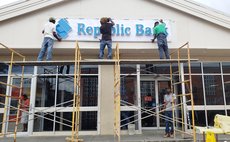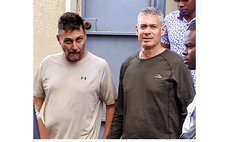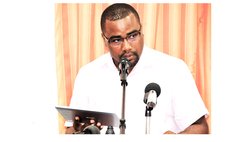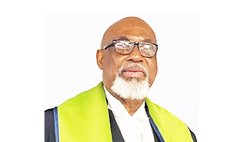The road to May 29th
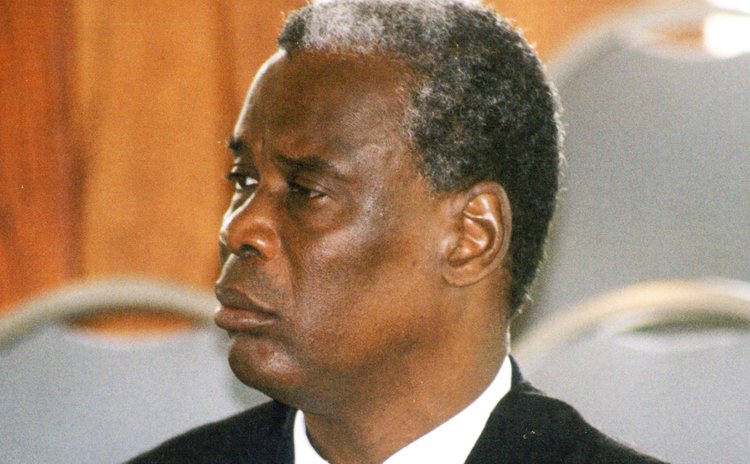
[Taken from a forthcoming book, Inside The Rebellion: Dominica 1979]
By William Para Riviere, Historian
"Those Who Do Not Remember the Past Are Condemned to Repeat It"
PART FOUR
Then came May 29th (127). The House of Assembly was scheduled to convene at half-past-ten in the morning. Two hours earlier, that is to say, at about eight o'clock, protestors were already assembling. They came from all over, including from Roseau, Goodwill, Newtown, the nearby villages of Pointe Michel, Mahaut and St. Joseph, the distant villages of Marigot, Castle Bruce, Wesley, Woodford Hill and La Plaine. And some came from as far as the second town of Portsmouth, 35 miles away. They were drawn from all social segments: civil servants, wage-workers in private employment, farmers and agricultural labourers, men and women, youth , students and even employers, big and small, activists from all sides of the political spectrum. By half-past-eight a "large crowd" had gathered along Kennedy Avenue between Bath Road and Freedom Street and along Bath Road. And, a "small crowd" formed downstairs Government Headquarters.
Fifteen minutes later a police presence was evident. Fifteen in uniform and ten in plainclothes had taken up positions inside the Government building, where they were joined by a detachment of ten soldiers under the command of Sergeant Durand. Notably, none of these men carried arms. So as to keep protestors away from the building, a contingent of about fifty policemen, led by Acting Superintendent Moise was posted on the building's ground floor. Not only were none carrying arms, but the majority of them were not equipped with baton.
By nine o'clock the crowd had grown to between 8,000 and 15,000. They gathered in an area where Parliamentarians would pass on their way to the Chamber. In reference to the nation's Attorney General, they chanted "Leo must go! Leo must go!" And, in anger, they damaged a metal gateway at the ground-floor entrance to the building. As parliamentarians, including members of Cabinet, made their way upstairs, a few were roughly "handled", as a result of which they were escorted to the House by police. Still, there was no "concerted" attempt by any section of the crowd to enter Government Headquarters.
The actions taken in response by the police were aimed "solely" at preventing the crowd's entry into the building. No attempt was made to disperse the protestors. Except that two stones were thrown by protestors, one of which smashed the window of the office of the Attorney General while the other hit the vehicle of Acting Commissioner of Police, Joseph, the rank-and-file policemen appear to have established rapport with the crowd. Their main fear was the size of the protest rather than the conduct of the participants.
Tear Gas, Guns and Bullets
Then, tear gas was thrown. This was done on command from the Acting Chief of Police, following the crowd's wrenching of the metal gate from its moorings, and a consequential fear that protestors would storm the building and find their way into the House.
At this point the soldiers intervened. A riot platoon of soldiers stood in readiness at their barracks at Morne Bruce. Acting Police Chief Joseph appealed to them to come down and assist the police in controlling the protestors. A riot platoon, on instructions from Commander Frederick Newton, moved from Morne Bruce to Police Headquarters. It was led by Lieutenant Dyer. The 26-man platoon approached the scene of the protest from Kennedy Avenue and arrived at its intersection with Freedom Street at 9:59 a.m. The time-table of what followed is this (128).
10:00 -Order given to fix bayonets.
10:01 -Order given to advance.
10:02 -Order given to halt approximately 10 meters from the Arawak Cinema.
-Protestors were chanting and shouting; and one or two stones were thrown.
10:03 -Platoon Commander warned the crowd to disperse. Protestors responded by throwing stones at the soldiers.
10:04 -The crowd was again ordered to disperse, failing which tear gas would be thrown.
10:05 -Order given to soldiers to adjust their respirators; the "banner men" were told to display the banner; and the crowd was ordered for a third time to disperse, which it refused to do.
10:06 -Order given to the "gas men" to prepare to throw.
-Order then given to throw, in response to which two grenades and four cylinders of gas were thrown.
-The reaction of the crowd was to run up Kennedy Avenue and thereafter, concentrate downstairs of Government Headquarters. The crowd held their ground along Bath Road and the top of Kennedy Avenue, in the area called "Pound", as well as on Hillsborough Street North and West of the Government building.
10:09 - Order given to riot platoon to "double forward", in response to which the soldiers proceeded East along Kennedy Avenue and halted South of the Government building.
-Stones rained on the soldiers from various directions, particularly from the Pound area.
10:10 -Tear gas cylinders were thrown again towards the Government building.
10:18 -Prime Minister John arrived with an escort of soldiers in a convoy of vehicles.
-So as to get the Prime Minister safely into the House, Sergeant Blaize and five other soldiers in vehicles at the head of the convoy discharged ammunition into the air.
10:20 -Principal of the St. Mary's Academy, Dominican Brother Egbert Germaine, was kicked and otherwise beaten by soldiers and, then, arrested and taken inside the Government building.
10:22 -Protestors retaliated by throwing stones at the building and damaging most of its glass windows.
-Order given to the platoon to fire a round of ammunition into the air.
-Protestors stopped throwing stones.
10:25- Stone-throwing resumed.
-Rifle fire was heard coming from soldiers not part of the platoon.
-Two protestors who were overcome by tear gas, Edward Robinson and Phillip Timothy, were shot by soldiers, Timothy fatally.
10:38 -In response to the throwing of stones at them from the direction of the Windsor Park at the top of Kennedy Avenue, the platoon of soldiers fired ammunition into the air.
-The platoon fired a total of 52 rounds of ammunition.
At day's end the list of casualties read: two dead and nine wounded. Dead were 22 year-old Phillip Timothy, shot by soldiers; and a six month old baby, suffocated by tear-gas thrown by soldiers. Wounded were Edward Robinson from a bullet lodged in his left hip; 13-years old school boy, Emanuel Aymer, from a bullet which entered under the left ear, passed under the left eye and exited through the tip of his nose; 13-year old school girl, Margaret Etienne, hit by several bits of shrapnel in the chest and neck; George Nelson, a teacher, wounded in the right arm by a bullet which entered the posterior of the arm and exited in front, causing damage to the whole arm, bone, vessels, nerves, muscles and skin; Robert Jackson, from two bullet bullets, one entering the left calf and, the other, the left thigh; Matthias Dover, from two bullets, one in the thorax and, the other, in the left arm; Vivian Rocque, taken to hospital, treated and discharged; Brother Germain, from having been thrown on his back, kicked and one soldier jumping on his chest; and Adams Jean Pierre, a hospital nurse, from a blow to his face by a stone thrown by soldier, Jno. Charles.
On their part twelve soldiers suffered minor injuries, mainly muscular, and bruises. They were Private Thomas, Richards, Jude, Ishmael, Alford and Piper; Lance Corporals, Graham, Aitken, Shillingford, Abraham and Davis; and Sergeant G. E. George.
Notably, before the day's end both pieces of proposed legislation which had occasioned this letting of blood – The Industrial Relations (Amendment) Bill and the Libel and Slander (Amendment) Bill – were passed in the House.
General Strike
In response to the events of May 29th an island-wide general strike was called, with immediate effect. The goal was the resignation of Prime Minister John. The call obtained resounding support not only from organized labour but from all elements opposed to the regime's running of the country. Among them were political organizations, the farming community, the business sector, secondary school students and schoolchildren on the whole. By nightfall of May 29th, the nation's economy was totally paralyzed. A mass rebellion was in the making.
But John would not resign. A Committee for National Salvation (C.N.S) was set up to direct the course of the rebellion. Twenty-three days later, a constitutional settlement was arrived at. Labour Party parliamentarians "crossed the floor" and threw their support behind Oliver Seraphin, John's Minister for Agriculture. On June 25th, a new government led by Seraphin as Prime Minister was put in place, with a mandate given him by the Committee for National Salvation (C.N.S) to call elections within the shortest time possible. When the poll was held in July 1980 the Freedom Party was swept into office.
Copyright ©, William Para Riviere, 2015
